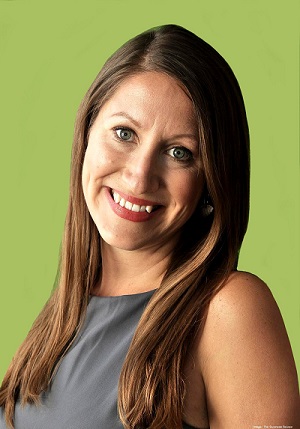Why Inclusivity Is the Foundation for a Better Software Development Approach
October 29, 2015

By Annmarie Lanesey, EO Albany member and co-founder of Greane Tree Technology
When Annmarie Lanesey co-founded a software development business in Troy, NY in 2008, she saw business ownership as a means to successful living. Her commitment to a flexible, yet powerful software development approach has fueled a broader passion: a more inclusive pipeline for developing STEM talent.
From where I sit, custom software development isn’t mysterious, remote or risky. It’s what my company and I do every day, successfully. Our case files cover a range of problems: moving workflow management from paper systems to a web portal, unlocking the mobile device market for companies that had legacy API’s, and enabling a publisher to host a high volume of streaming video, as well as print content. All these issues have been addressed through software we built ourselves. My three-part formula for what really works, based on success stories and hard-won experience comes down to this: making sure that the path forward is transparent enough so that everyone involved can contribute:
Transparency with clients, to define and track the mission
If the development process can’t keep the key stakeholders in the loop, it turns into something that only the CTO and the coders understand. We use a methodology that supports inclusivity with clients, so we can keep the mission true to its end users.
Called Agile methodology, it’s a set of practices that keep the developer team and the client in close alignment, and moving quickly together. One key Agile practice organizes projects around User Stories, rather than around technical components like databases, screens, security protocols, and functions. The client and the developers come together to write narratives for the journeys that different user take through the software. Since everyone has experience using software, User Stories allow us to be so much more inclusive as the project proceeds.
Openness across the team, to build stronger products
Custom software developers solve problems written by other software developers – in code. There are multiple languages, platforms, and approaches. Everyone who writes code – like everyone who cooks, or writes, or builds houses – develops personal specialties and styles. It human nature and “it’s all good,” except for when the software performs inconsistently, and then only one person can fix it. A better approach to software development uses transparent practices in coding, so that all the team members can follow along, learn from, and build upon code that another team member has written.
It’s called Clean Code, and in my experience, it’s essential to collaboration with the client and across the team; performance or the software we make and the company we build; and future development as our business and all our clients face new challenges. Following these transparency-friendly Clean Code practices – with clear guidelines for how we build code – not only creates a stronger product for the client’s future, it establishes a more capable, more aligned team for our own future.
Inclusive in growing talent, for a scalable business
A growing business needs a growing team. In my journey as an entrepreneur, I’ve seen the way transparency and inclusiveness empower our clients and strengthen our internal processes. So I have taken these principles to a third arena: finding and training talent.
Since coders are people who communicate really well with machines, they won’t turn up with resumes that are loaded with recommendations, extracurriculars, hobbies, or even college degrees. I’m passionate about reaching out to invite and include everyone who wants to try coding, because I have seen terrific STEM talent in women, minorities, and people from low-income neighborhoods. My focus now is on working with community organizations to create transparent career paths for people with STEM talent. It takes a matter of months for someone talented to learn to code.
I didn’t start a business in order to advocate for any principles in education or community development. But I’m now energized by a vision of the software industry as more diverse and inclusive. It happened along the way: I discovered that being true to our clients and our quality standards was really about transparency and inclusiveness.
Annmarie Lanesey is an EO Albany member and President of Greane Tree Technology. Since co-founding the company in 2008, she has overseen projects for publishing powerhouses, social media start-ups, game developers, academic institutions, national nonprofits and New York State agencies. Lanesey advocates for inclusivity in STEM talent development through her roles on the Board of Directors of CEO (Committee for Economic Opportunity), as part of the Business Alliance for Tech Valley High School, and numerous other community based non-profits. Email her at [email protected].